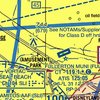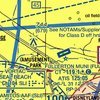Let'sgoflying!
Touchdown! Greaser!
500’ tower
How far from the base would one expect guy wire anchors, at the greatest?
How far laterally from the tower would guy wires be found, on a 500’ tower, at 100’agl?
(If one were flying at 100’agl, how close could you get?)
How far from the base would one expect guy wire anchors, at the greatest?
How far laterally from the tower would guy wires be found, on a 500’ tower, at 100’agl?
(If one were flying at 100’agl, how close could you get?)






